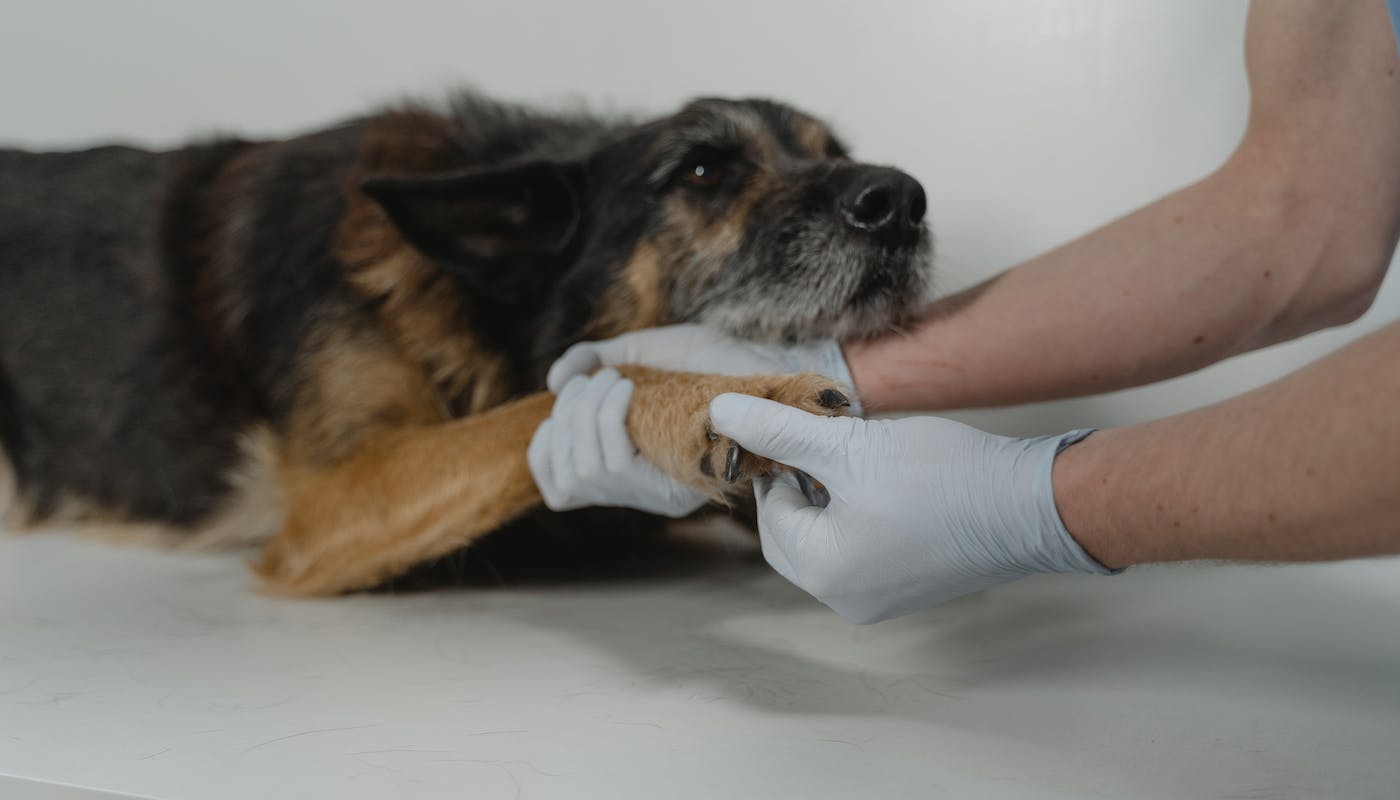Pulmonary Hypertension in Dogs
What is pulmonary hypertension, and how does it manifest in dogs? What’s the prognosis like? Here’s an introduction to pulmonary hypertension in dogs.
What Is Pulmonary Hypertension?
Pulmonary hypertension is a condition which affects the pulmonary artery. That’s the one on the right side of the heart which supplies blood to the lungs. Under this condition the artery becomes thicker, reducing blood-flow, increasing blood pressure, and making the heart work harder. If left untreated, pulmonary hypertension in dogs can cause heart failure.
As it’s caused by a gradual build-up, pulmonary hypertension has four stages. In the early stages, it is detectable but does not affect your dog’s lifestyle. In late stages, pulmonary hypertension is very severe and limits your dog’s activity. They will need frequent monitoring and treatment to be kept comfortable.
What Causes Pulmonary Hypertension in Dogs?
Pulmonary hypertension can be caused by problems in the lungs or heart. This condition is usually found in older dogs and affects bitches more than dogs. Overweight dogs are thought to be at higher risk.
It is a complex condition to diagnose and if suspected, your vet will carry out tests like x-rays, blood tests, and an echocardiogram (ultrasound for the heart).
In dogs, pulmonary hypertension can be caused by:
- Disorders affecting blood vessels in the lungs
- Lung disease, pneumonia or bronchitis
- Blood clots which narrow or block the pulmonary artery
- Diseases such as Cushing’s, Heartworm disease, Kidney disease, and autoimmune conditions
- Problems with the heart, such as thickening of the smaller arteries, tumors, or conditions which cause the wall to become thickened
- A developmental disorder in the heart.
How is Pulmonary Hypertension Different to Systemic Hypertension?
Systemic hypertension causes raised blood pressure which affects your dog’s whole body. Like pulmonary hypertension, it can be caused by several different conditions, and treatment will depend on the symptoms. Systemic hypertension causes bleeding inside the eyes or nose, heart murmur or seizures, among other symptoms. Although complications can arise – such as kidney or heart failure – systemic hypertension can often be managed through diet and medication.
OK. So What Are The Symptoms of Pulmonary Hypertension in Dogs?
The common and key symptom is getting out of breath during exercise. You’ll notice your dog lacks their old enthusiasm for energetic activity and may become tired on walks. This may be accompanied by:
- Difficulty drawing breath or rapid breathing, when at rest
- A faster heart-rate (and possibly chest pain, which we owners can’t spot)
- Coughing (or bringing up blood)
- Passing out
- Losing weight
- Blue tint to the gums or tongue (due to lack of oxygen in the blood)
Because a slower pace and heavier breathing may be associated with old age or inactivity, dogs often aren’t diagnosed with pulmonary hypertension until the condition becomes severe and they collapse.
How Will The Vet Treat Pulmonary Hypertension in Dogs?
If your dog has collapsed or developed breathing difficulties, they will be put onto oxygen and additional medication to address underlying issues such as fluid in the lungs or heart disease.
Your vet will aim to identify the cause, since this will help them to prescribe the right treatment. After doing this to their satisfaction and prescribing the relevant treatment (including drugs such as Sildenafil), your vet will arrange regular check-ups for your dog. At these they’ll perform physical examinations including blood pressure and heart scans and ensure that your dog is on the right medication.
Sadly, pulmonary hypertension can’t be reversed and much of the damage is permanent. The focus will be on helping your dog to remain active and comfortable for as long as possible. Sildenafil has improved the typical prognosis in recent years. It’s been clinically shown to increase life expectancy, with 4/25 dogs surviving past four yearshttps://www.ncbi.nlm.nih.gov/pmc/articles/PMC6979098/.
What’s the Prognosis?
Pulmonary hypertension is a severe condition which affects dogs as well as humans. In both, it’s incurable. If very advanced, pulmonary hypertension can cause death within 1-2 months. However, depending on the underlying cause and medication, your dog could live for 1-5 years after diagnosis. And it’s hoped that, with recent and future advancements in treatment, the prognosis could improve in the futurehttps://www.dvm360.com/view/canine-pulmonary-hypertension-part-2-diagnosis-and-treatment.
How Can You Support a Dog With Pulmonary Hypertension?
When you get home, you’ll need to take a careful approach to your dog’s lifestyle and exercise. For example, walks should be gentler and shorter, and not taken in the hottest part of the day. High altitudes can cause breathing difficulties, as can smoke in the air – or air-conditioning. You should help your dog to avoid stressful situations too. If your dog has developed pulmonary hypertension as a result of another condition, they may need a special diet; your vet can provide advice about this. Remember that your dog may be anxious about their breathing too, and focus on increasing their quality of life. Dogs are emotive animals so they’ll look to you for reassurance, keep calm in stressful situations and always let them know they’re loved.
